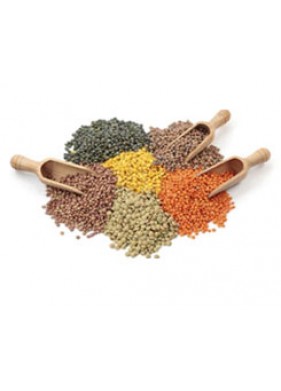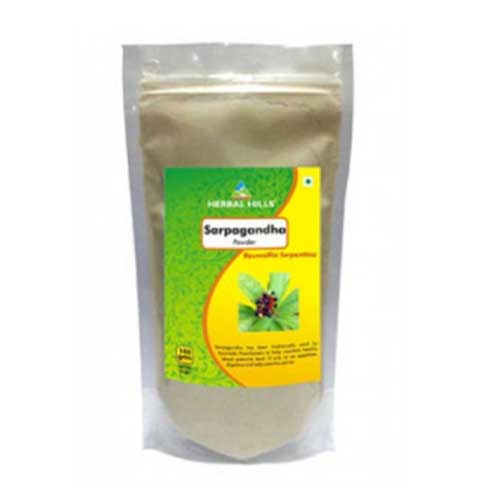Sarpagandha | Rauwolfia Serpentina| Chota Chand | Patala Garuda Podi 50gm
Sarpagandha | Rauwolfia Serpentina| Chota Chand | Patala Garuda Podi 50gm
- ₹40.00
-
₹38.00
-
Brand:Pachaa.in
-
Product Code:PT001215
- In Stock
Sarpagandha | Rauwolfia Serpentina| Chota Chand | Patala Garuda Podi 50gm
Sarpagandha, also known as Rauwolfia serpentina (Rauvolfia serpentina) or Indian black snakeroot is one of the very important Ayurvedic herbs. It is used in treating high BP, lack of sleep (insomnia) etc.
Tamil name – Carpakanta, Covanna Milpadi, sivan amalpodi, savannamibori, covanna milpori, sarppaganti, Chivan Amalpodi.
Botanical Name: Rauwolfia serpentina Benth ex. Kutz.
Family – APOCYANACEAE (Kutaja Kula)
English Name- Sepentina root, Black snakeroot, Rauvofia root, serpentine root.
Hindi name – chota chand, Dhaval barua, Nayi, Nakulikand, Nkulkanda, Dhavalbarua, chotachand, Rasna, Rarnabheda, Herkai chandra, Candrabhaga.
Kannada name – Sarpagandhi, Chandrika, sutranabhi, patala garuda.
Bihari name – Dhanmarua, Chandmarua, Isargaj, Dhanbarua, Dhavalbarua, Sanachando
Telugu name- Patala Garuda, Patalagani, Patalagaruda, patalagandhi, padagpuchahv, dumparasna
Bengali Name- Chandar, Nakuli, Sugandhanakuli, chotachand, gandrasana, chandra Nolbel, amepadi. \
Marathi Name- Adkayi, Adakayi, Harki, Sapasanda, Chotachand
Gujarati Name- amelpodi, Amelpadi, Norbal
Malayalam Name- Chivan Amalpodi, Chivan Avalpori, Tullunni, Chuvanna avilpori, amalpori, Chuvanna amalpari, civan amalpadi.
Chinese name – shégēn mù, yìndù shémù
Burmese name – Bongmaiza.
Rauvolfia serpentina is known by many common names such as Serpentwood, The Himalayan snakeroot, Serpentina root, Serpentine root, Rauwolfia, Chandrabhaga and Sarpagandha. Sarpagandha is a medicinal plant and its leaves and roots are used mainly for therapeutic purpose. It is the main herb for hypertension.
The dried roots of plant are source of the pharmacologically important alkaloids such as reserpine, rescinnamine, deserpidine, ajamalacine, ajmaline, neoajmalin, serpentine, a-yohimbine. The plant received world recognition after isolation of alkaloid reserpine by Swiss scientists in year 1952 (Muller, Schlitter and Bain). Reserpine based medicines are prescribed as antihypertensive and antipsychotic drugs.
The main biomedical action of the roots are alterative, antispasmodic, analgesic, carminative, hypotensive, nervine, sedative and vasodilatory. Roots are sedative due to presence of several alkaloids and used in treatment of mild to moderate hypertension (high blood pressure), stress, certain forms of insanity, insomnia and cardiac oedema. The bark, leaves, and roots are used against snake and scorpion poisoning. The juice of the leaves is used as a remedy for the removal of opacities of the cornea.
In Ayurvedic formulations, Sarpagandha is prescribed in treatment of high blood pressure, insomnia, asthma, acute stomach ache and painful delivery and for mental illness (neuropsychiatric disorders, psychosis, schizophrenia). It is used in snake-bite, insect stings, and mental disorders.
Sarpagandha, is also used in treatment of other diseases such as gastric tumor, general weakness, goiter, hysteria, insomnia, insanity, lipoma, paraplegia, paratyphoid, piles, pneumonia, splenomegaly, stomach disorder, tonsillitis, traumatic wound, tuberculosis and vertigo and pain in abdomen, body, and chest.
There is no doubt that Sarpgandha lowers blood pressure. It dilates blood vessel and has sedative effects.But it also causes many side effects. For example, alkaloid Reserpine has potent hypotensive and tranquillizer effect but its prolonged usage stimulates prolactine release and causes breast cancer. There aremany other side effects of this herb including muscles relaxation, decrease of fertility, lowering of male hormones, abnormal heart rhythm, acidosis and shock. It must not be taken in ulcers, ulcerative colitis and depression.
Sarpagandha has depressive effects which can persist long after its use. So any one suffering from depression should not take its root powder. The most common side effects or negative effects on health include dizziness, headache, faintness, drowsiness, redness of eyes, dry mouth, diarrheas, impotence (erection problems), and low sex drive. The other less common side effects are irregular/slow heartbeat, chest pain, shortness of breath, stiffness, trembling of hands, swelling in feet and legs etc. Few rare side-effects include rash, skin itchiness, sore throat, fever, pain in abdomen, nausea, vomiting, Bleeding, nightmares, and urinary problems.
People suffering from epilepsy, and those who have given general or spinal anesthesia should take it only after consulting doctor. People above the age of 60 should avoid taking it as they are at the greater risk of suffering its side-effects.
Please read on to know benefits, harmful effects, side effects, drug interactions, contraindications of this medicinal. This page is intended to give right information about the herb, so that people can use it safely.
General Information
Rauvolfia is a perennial undershrub widely distributed in India in the sub- Himalayan tracts upto 1,000 m as well as, in the lower ranges of the Eastern and Western Ghats and in the Andamans.
It is an herbaceous perennial with a long, vertical, yellowish, somewhat tuberous, nodular rootstock and simple, woody stems, 30—60 cm high.
Leaves are simple, in whorls of 3, exstipulate, confined to the ends of branchlets, 7—13.5 cm long, 2.3—5 cm broad, lanceolate, tapering to both ends, undulate, glabrous, thin, light green, lateral veins 7—11 pairs, petioles 5—8 mm long.
Flowers are regular, bisexual, 1.3 cm diameter, on short pedicels 8 mm long, in rather close, irregular corymbose cymes, peduncle terminal, erect, glabrous, 1.5—3.5 cm long, bracts small, 2.5—3 mm long, 1 mm broad, filiform. Calyx segments 5, free, 3—3.5 mm long, 1—1.5 mm broad, linear, glabrous, acute or subacute ;corolla segments fused into a long, glabrous tube, about 2 cm long, pink, dilated 1.2 cm from base at insertion of stamens, above this corolla tube bent and of a lighter shade of pink, lobes 5, white or bright red, 6 mm long, 4 mm broad, oblong, rounded, convolute, contorted, overlapping anti-clockwise. Stamens 5, inserted above the middle of the corolla-tube.
Fruit a follicle, up to 0.8 cm long, more or less connate, minutely apiculate, glabrous, purplish-black when ripe.
Important Medicinal Properties of Sarpagandha
Rauvolfia serpentina is rich in medicinal properties. The understanding of these properties will help us to better utilize this herb. These also indicate the conditions in which we should avoid it. For example, it is Teratogenic and disturb the development of an embryo or fetus. It is Uterocontractant and starts contraction of uterus. Due to all these factor it must not be used in pregnancy.
Below is given medicinal properties along with the meaning.
- Antiandrogenic: Blocks the action of androgens (male sex hormones)
- Antiarrhythmic: Treat abnormal heart rhythms resulting from irregular electrical activity of the heart.
- Antifertility: Reduces fertility.
- Antipsychotic: Manage psychosis.
- Cardiodepressant: Decreases heart rate and contractility.
- CNS Depressant: Depresses, or slows, the sympathetic impulses of the central nervous system (respiratory rate, heart rate).
- Expectorant: Promotes the ejection of mucus
- Hypnotic: Sleep-inducing.
- Hypotensive: Lowers blood pressure
- Hypothyroid: Lowers thyroid.
- Narcotic: Affecting mood or behavior.
- Sedative: Causes depression of the central nervous system, which reduces mental activity.
- Teratogenic: Causing congenital anomalies or birth defects.
- Tranquilizer: Promotes tranquility.
Advantages / Benefits of Sarpagandha
- This is the main herb for high blood pressure.
- It dilates the blood vessels and reduces blood pressure.
- It reduces Vata and gives relief in insomnia and agitation.
- It is sedating and tranquillizing.
- It is Brain tonic and given in combination with other brain nourishing herbs.
- It gives relief in pain and colic.
- It is an exceptionally powerful.
Disadvantages of Sarpagandha
- It is hot in potency and has warming effect on body.
- It can cause deformities in developing baby, if taken during pregnancy.
- It can cause serious depression, tiredness and nasal congestion.
- It may induce peptic ulceration.
- It may aggravate allergic disorders.
- Wrong dose can cause hypotension and lead to giddiness and sleepiness.
- It can cause fluid retention.
- It may increase salivation, nausea, vomiting and diarrhea.
- Overdose may cause diarrhea, bradycardia and drowsiness.
- Prolonged use can cause sterility.
Who should take Sarpagandha?
This herb is not for everyone. It can be given to people who are strong but highly irritable.
It is not meant for weak, lean, and depressive patient.
Medicinal Uses of Rauvolfia serpentina (Sarpagandha)
Sarpagandha has affinity for heart. It has vasodilatory properties and causes dropping of blood pressure. Its main indication is mild to moderate hypertension.
Sarpgandha formulations and reserpine are used in the management of essential hypertension and in certain neuropsychiatric disorders. For Hypertension, Heart diseases, Insomnia, Epilepsy, the root powder is taken in dose of half gram, twice a day.
1. Antihypertensive medicine
2. Antipsychotic medicine
Another important therapeutic use of the roots of Sarpagandha is in psychotic disorders such as delusions, hallucinations, schizophrenia, paranoia or disordered thought. Sarpagandha is sedative, narcotic and tranquilizing. The sedative and tranquillizing properties of the drug are thought to be related to depletion of catecholamine and serotonin from the brain.
It is used to get relief from various central nervous system disorders, anxiety states, excitement, maniacal behavior associated with psychosis, schizophrenia, insanity, insomnia, fits and epilepsy.
Combination of Rauvolfia serpentina, Nardostachys jatamansi and Tinospora cordifolia helps to induce better sleep in insomnia patients.
- For all mental problems, one part Sarpgandha, three parts of Brahmi and two parts of Shankhpushpi are mixed to form a power. This powder is taken in dose of 1-3 grams, thrice a day. Or equal amount of Sarpgandha, Brahmi and Sankhpushpi are mixed and taken in dose of 250 mg thrice day.
- For migraine, it is given in dose of 50mg to 100mg.
- For fits, the root paste is taken in dose of 5 grams twice a day with water for one month.
- The decoction of the roots is given to increase uterine contraction for expulsion of fetus in difficult cases.
- It helps to get rid of intestinal parasite.
- The juice of the leaves is used on the eyes to remove opacities of the cornea and consumptions of fresh small pieces lower the blood pressures.
- It is used as a snake-bite remedy. Root Decoction and leaves is given to cure snakebite.
Tags: Sarpagandha Podi 50gm, Sarpagandha, Rauwolfia Serpentina, Chota Chand, Patala Garuda, buy Sarpagandha online chennai, buy Sarpagandha online, buy Sarpagandha in chennai, buy Sarpagandha online chennai, buy Sarpagandha online, buy Sarpagandha in chennai, ayurvedic churna, ayurvedic medicines, tonics & drugs, siddha, Siddha medicine, Natural medicine, medicine, powder, nattu maruthuvam, nattu, maruthuvam, naatu maruthuvam, naatu marundhu, naatu marunthu, marunthu, marundhu, Ayurveda








